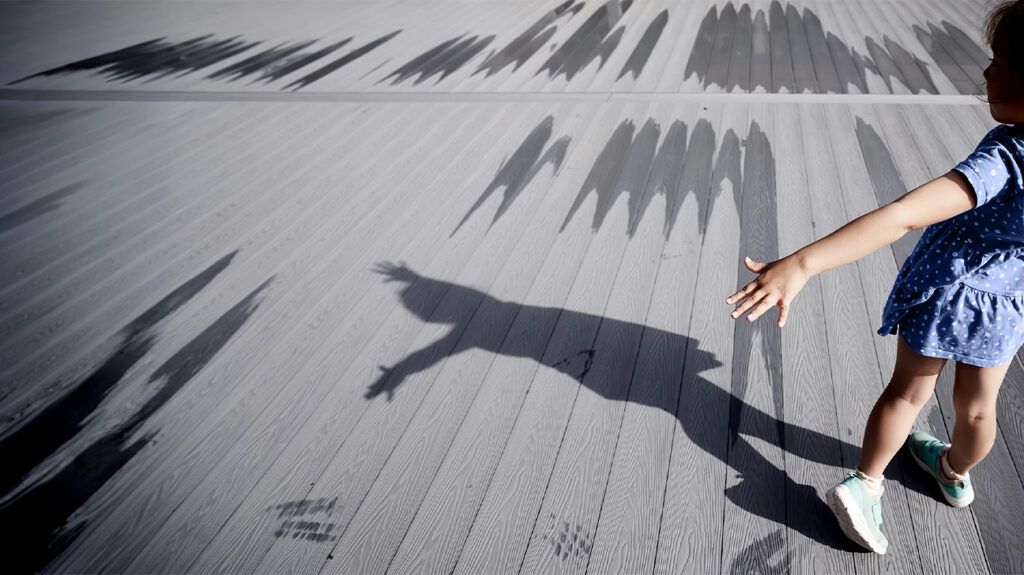Post-traumatic stress disorder (PTSD) in children can cause signs such as sleep disturbances, withdrawal, and emotional upset. Diagnosis involves a symptom assessment, and therapy is the first-line treatment.
PTSD is a mental health condition that can occur after a person experiences trauma. Trauma can occur following extremely stressful events or specific stressful circumstances.
Previously, researchers associated PTSD with war veterans, and it was also known as “shell shock” or “combat fatigue.” However, PTSD can occur following any event or circumstance that is stressful enough. Anyone can experience PTSD, even a child.
This article explains the signs of PTSD in children, its causes, diagnosis, and treatment, and how to help a child with PTSD.

According to the Centers for Disease Control and Prevention (CDC), a child may have PTSD if they experience certain symptoms for
Potential symptoms include the following:
- nightmares and sleep disturbances
- repeated thoughts of the stressful event
- reliving the event through play
- emotional reactions to reminders of the event
- persistent sadness or fear
- absence of positive emotions
- hypervigilance against potential threats
- irritability, anger, and increased startle response
- helplessness, hopelessness, and withdrawal
- avoidance of people or places relating to the event
- denial of the event, and lack of feeling
Having one or some of the above symptoms does not guarantee that a child has PTSD. A doctor will also want to know how long symptoms have persisted, if they interfere with other aspects of life, and if they began after a traumatic event.
PTSD vs. ADHD
PTSD symptoms in children
- inattention
- lack of focus
- impulsive behavior
- distractibility
- irritability
- issues with memory
- sensory sensitivity
- impaired self-esteem
When a medical professional assesses a child for ADHD, they may reduce the risk of a misdiagnosis if they consider whether the child has experienced trauma.
Learn more about the early signs of ADHD.
Events that cause extreme stress can lead to PTSD in children. Children
Some examples include:
- violence, such as school shootings
- abuse
- injury
- accidents, including car crashes
- death of a loved one
- the threat of death to them or a loved one
- natural disasters, such as floods or fires
Risk factors for PTSD in children
While any child can experience PTSD, the following factors may make it more likely to occur:
- female sex
- lack of family support
- being closer to the traumatic event
- increased parental upset from the trauma
- increased severity of the trauma
- repeated traumas
- traumas involving people hurting each other
Doctors diagnose PTSD with an in-person interview, ideally using a standardized tool such as the Clinically Administered PTSD Scale (CAPS). The adult version of this test is the CAPS-5, while the
The CAPS-5 and CAPS-CA-5 use information from the PTSD diagnostic criteria in the Diagnostic and Statistical Manual of Mental Disorders, 5th edition, text revision (DSM-5-TR).
The DSM-5-TR has two sets of PTSD diagnostic criteria. One is for children
One of the criteria doctors use to determine whether a child’s symptoms are from PTSD is whether those symptoms occurred after a trauma.
Other questions address points such as symptoms duration, effects on social functioning, and whether the child has experienced any developmental impairment.
The American Academy of Child and Adolescent Psychiatry encourages trauma-focused psychotherapy as the treatment for PTSD in children.
Medication for PTSD in children is not as effective as therapy. However, medication can sometimes ease severe symptoms or manage comorbid conditions and stabilize a child enough so that they can participate in therapy.
Helping a child with PTSD involves enabling the child to feel safe. Parents and caregivers may be able to achieve this by:
- enlisting support from family, friends, and school staff
- identifying and avoiding triggers
- preventing further trauma
- being available to listen, encourage, and reassure the child
- creating predictable and consistent routines
- remaining calm and avoiding taking the child’s outbursts personally
- teaching relaxation strategies, such as breathing exercises
Parents and caregivers can also ask their child’s therapist for suggestions.
When PTSD symptoms first appear, it can be challenging to tell whether a child is just going through a rough few days or is experiencing something more serious.
If symptoms persist or interfere with regular routines and activities, it may be time to speak with a doctor. Contacting a doctor can also help parents and caregivers understand if another condition, such as ADHD, is causing their child’s symptoms.
Post-traumatic stress disorder (PTSD) occurs in some people after they experience trauma or an extremely stressful circumstance or series of events. It can happen to anyone, including children.
Signs of PTSD in children include sleep and mood disruption, avoidance, withdrawal, and an exaggerated startle response.
Parents and caregivers can help by creating stability and a sense of safety for their child. Awareness and protection from triggers, relaxation strategies, and the support of family, friends, and school staff can also help.
The first-line treatment for PTSD in children is psychotherapy. Medications do not work as well for children as adults but may help in some cases.
